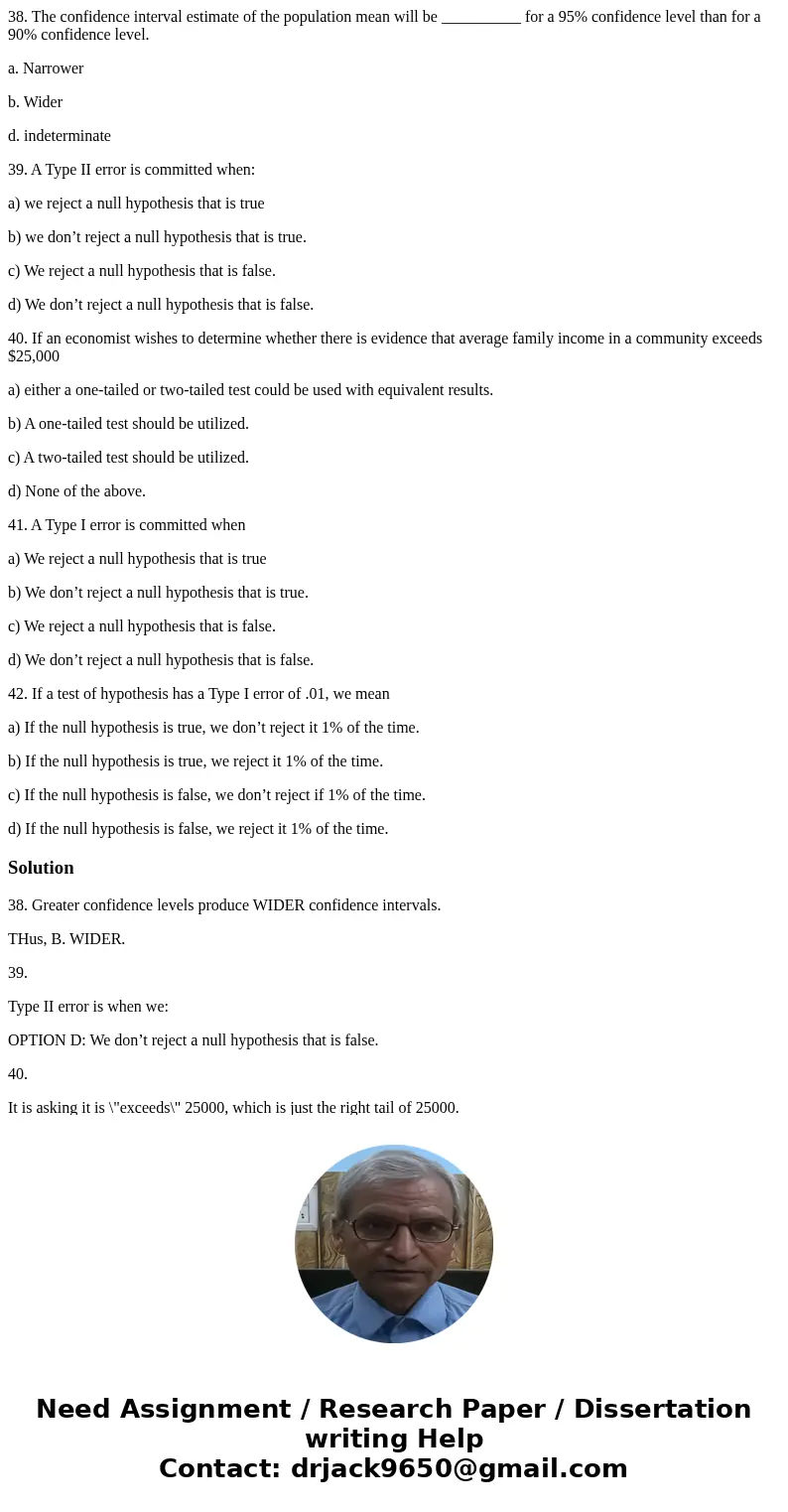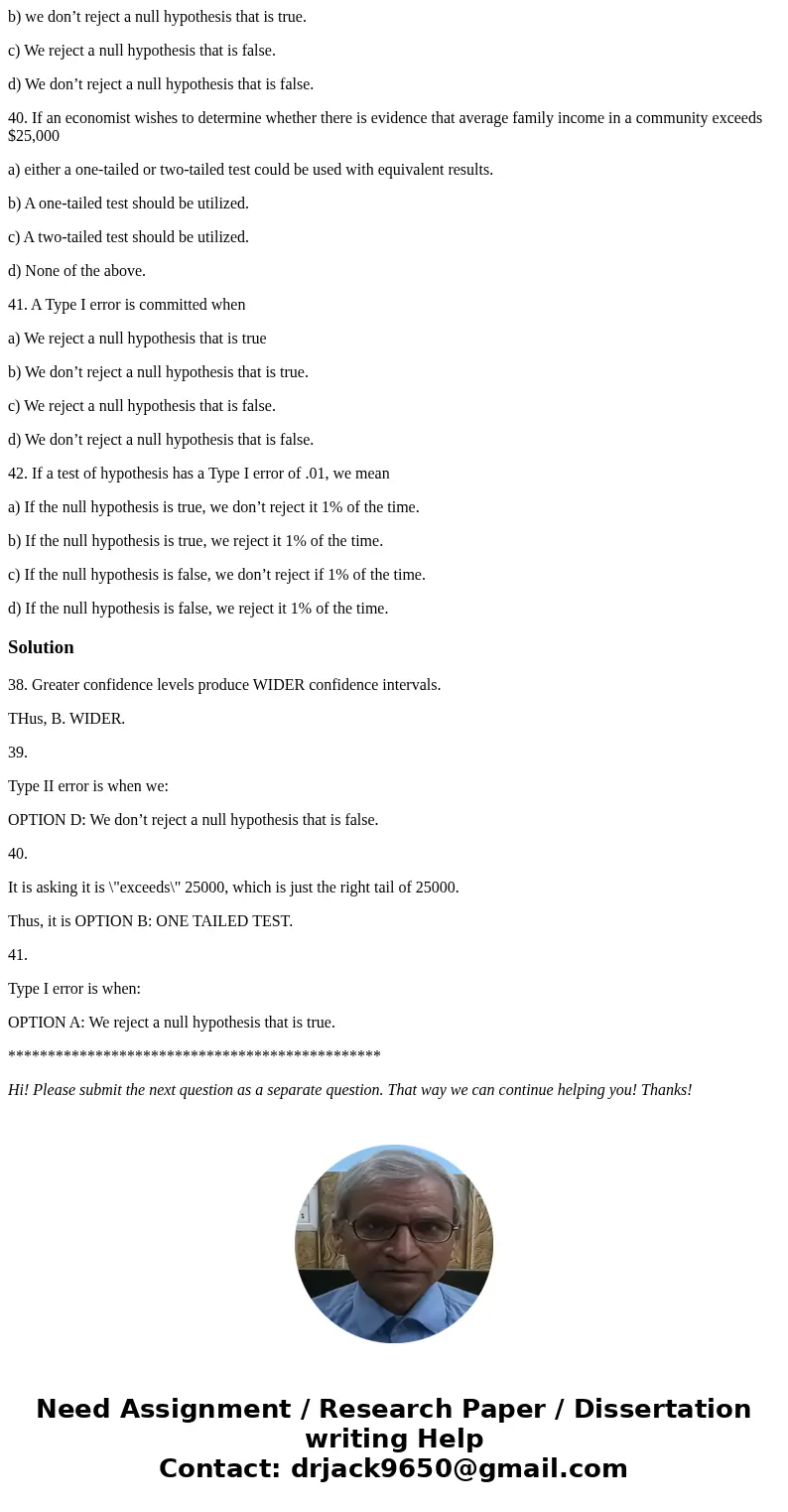38 The confidence interval estimate of the population mean w
38. The confidence interval estimate of the population mean will be __________ for a 95% confidence level than for a 90% confidence level.
a. Narrower
b. Wider
d. indeterminate
39. A Type II error is committed when:
a) we reject a null hypothesis that is true
b) we don’t reject a null hypothesis that is true.
c) We reject a null hypothesis that is false.
d) We don’t reject a null hypothesis that is false.
40. If an economist wishes to determine whether there is evidence that average family income in a community exceeds $25,000
a) either a one-tailed or two-tailed test could be used with equivalent results.
b) A one-tailed test should be utilized.
c) A two-tailed test should be utilized.
d) None of the above.
41. A Type I error is committed when
a) We reject a null hypothesis that is true
b) We don’t reject a null hypothesis that is true.
c) We reject a null hypothesis that is false.
d) We don’t reject a null hypothesis that is false.
42. If a test of hypothesis has a Type I error of .01, we mean
a) If the null hypothesis is true, we don’t reject it 1% of the time.
b) If the null hypothesis is true, we reject it 1% of the time.
c) If the null hypothesis is false, we don’t reject if 1% of the time.
d) If the null hypothesis is false, we reject it 1% of the time.
Solution
38. Greater confidence levels produce WIDER confidence intervals.
THus, B. WIDER.
39.
Type II error is when we:
OPTION D: We don’t reject a null hypothesis that is false.
40.
It is asking it is \"exceeds\" 25000, which is just the right tail of 25000.
Thus, it is OPTION B: ONE TAILED TEST.
41.
Type I error is when:
OPTION A: We reject a null hypothesis that is true.
***********************************************
Hi! Please submit the next question as a separate question. That way we can continue helping you! Thanks!


 Homework Sourse
Homework Sourse